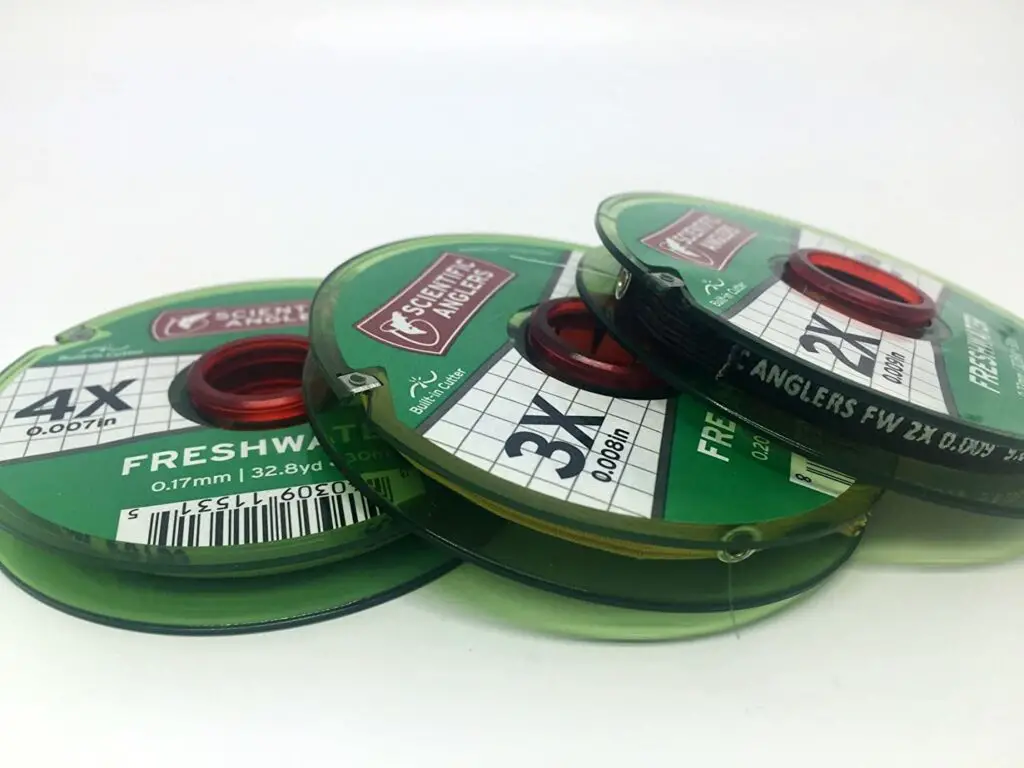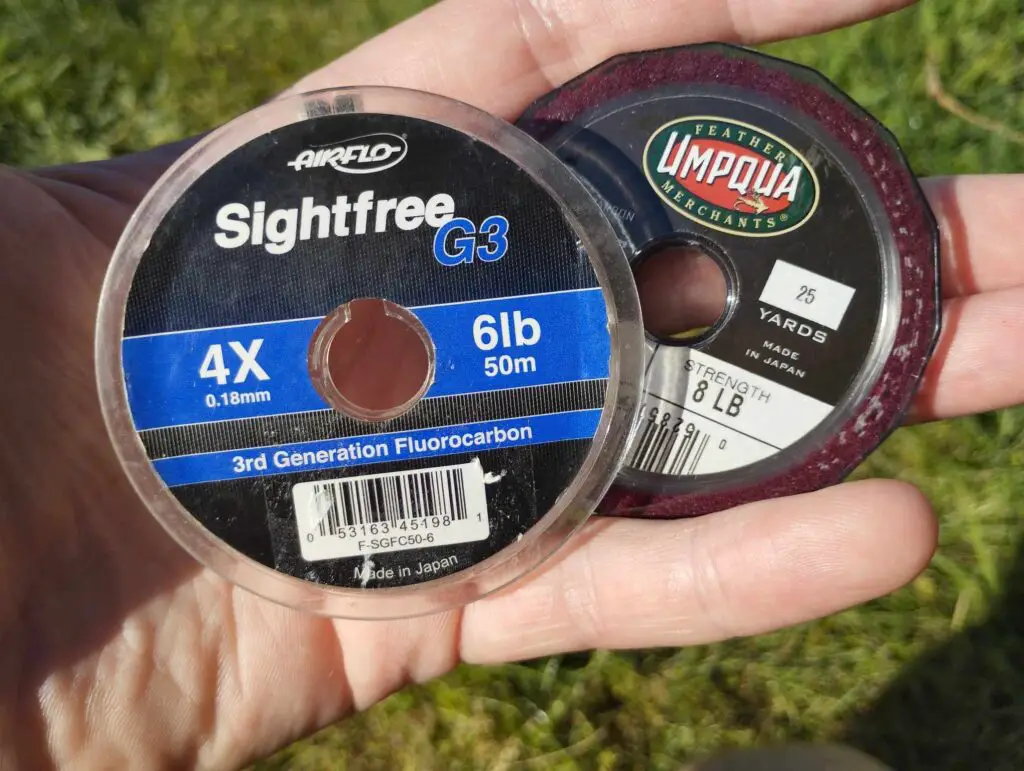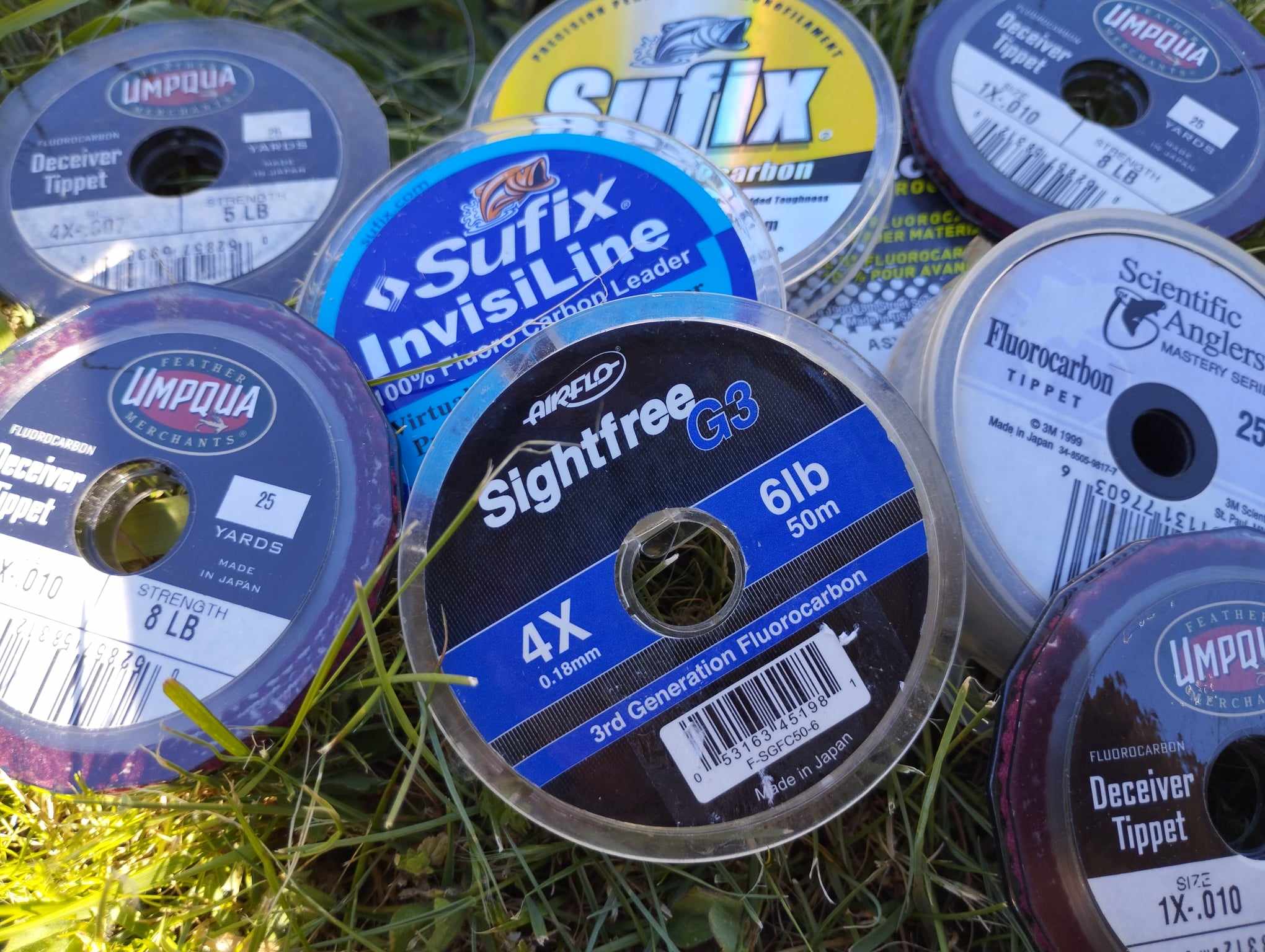Two types of monofilament lines make up the bulk of tippet material. They are nylon and fluorocarbon. There are also hybrid lines known us copolymers. I will explain the differences later.
All types of modern tippet materials have more in common than sets them apart. They are all extremely thin and, for such diameters, they offer impressive strength and durability. The modern tippet lines are all impressive and a massive improvement over the horsehair or silkworm gut lines my great-grandfather had to use.
While modern tippet is amazing, there are some differences between nylon monofilament (mono) and fluorocarbon. Let’s discuss them below.
Which brand of fly-fishing tippet is best?
Fly fishing is very tribal. There is a high chance that fishermen would continue to buy the brands the trust. When I first started trout fishing, I was told by a very well respected and experienced guide that he only fishes Rio Powerflex monofilament and Seaguar fluorocarbon because they were the best.
Being young and poor at the time. I brought whatever I could find on special. So I have fished with most of the best known brands including Rio, Cortland, Umpqua, Airflo, Ultragreen, Stroft and others that I have forgotten. For the most part, they are all basically the same. I do not think the branding on the spool matters that much.
A few years back, I did some strength tests, and at the same diameter, they all broke within the same ballpark.
To be completely honest, I normally buy monofilament tippet based on X rating (diameter) and price alone. Although I do favor the spools which comes with the little material covers which holds the line in place and prevent it from flying everywhere. The quality is so good, that brand does not really matter.
Fluorocarbon is a bit of a different story. There are some terrible cheaper fluorocarbons on the market. They are too stiff with terrible memory and pathetic knot strength. I rarely fish fluorocarbon, but when I do I spend the extra to buy a quality spool from an established brand. Avoid any that are made in China, they still have not caught up with USA or Japan when it comes to the manufacturing of fluorocarbons. I have had good experiences with Rio Flouroflex, Umpqua Deceiver and Airflo Sightfree.
Transparency in water
Viability in water is the big one. This is also the only category where fluorocarbon has a probable advantage over mono. Whenever I pick up a spool of fluorocarbon, I immediately see claims how Fluro is invisible in the water. That its refraction rating is close to water, making it nearly invisible. Trout struggle to see it.
Let’s start with the truth, fluorocarbon refraction is very close to water. So to our eyes, it is a lot less visible than nylon based monofilaments. It is probably also harder for trout to see.
But refraction is not everything, there is also reflection. Refraction is how light bends through the material, reflection is how light bounces of. I have yet to see any evidence that fluorocarbon reflects light any less than mono.
Finally. Both types of line have the potential to cast shadows over the water. The shadow moving over them is what I suspect actually spooks the fish. Luckily, the tippet we use are all very thin, and are unlikely to cast a visible shadow in all but the sunniest and gin clear conditions.
Mono vs fluorocarbon abrasion resistance
All the adverts claim fluorocarbon has improved abrasion resistance. This is simply not the case. Both types of line are very close, and many tests comparing the two present monofilaments as the clear winner.
Abrasion resistance is also not a big concern for me while trout fishing. Trout do not have rough skin, or sharp teeth. While brown trout certainly fight dirty, the rivers and lakes we fish in usually lack the sharp barnacles and sea shell which cause the majority of abrasion when fishing.
When we lose a trout because of abrasion, it is usually because it wraps us around a branch or through thick weeds. No amount of improved resistance is going to prevent that.
Does mono or fluorocarbon have better knot strength?
Mono simply has stronger knots than fluorocarbon. Mono is usually softer, which allows the knots to tighten down more securely.
In saying that, there are plenty of knots that work just fine in fluorocarbon. Use the correct knot and learn to tie it and fluorocarbon. I like the 16/20 knot (Pitzen) it is simple to tie and holds strong, while the more fiddly to tie Trilene knot also has impressive knot strength.
Nylon floats, fluoro sinks
The common reputation is that nylon floats, making it good for surface presentations. While fluoro sinks, making it good for nymphs.
Well, this is not actually true. Once the water tension is broken they both sink. Neither is positivity buoyant. Nylon does sink slower than fluorocarbon.
Some people like to use a short section of fluorocarbon on their tippet when dry fly fishing, they believe it helps sink through the surface and does not ‘bulge’ the surface like monofilament making it less visible for the trout.

Does mono stretch more than fluorocarbon?
Diameter for the most part determines the amount of stretch in the line. So 4X mono stretches comparably to 4X fluorocarbon. There is not much of a difference there.
One thing is that fluorocarbon has more memory. Every time you stretch it, the line remembers, and it slowly elongates. Although to be fair, monofilament when wet shares that in common.
Is monofilament or fluorocarbon better for the environment?
Monofilament breaks down a lot quicker than fluorocarbon. That lost fluorocarbon tippet could take centuries before its breaks down entirely.
Fluorocarbon is more resistant to UV, which means if you kept the spool out in the sun it would last for longer than a spool of nylon. Although, I store mine inside my vest, where it is dark and cool. It never really sees the light so that is less of an issue.
Can I use mainline for tippet?
Whenever I use heavier tippet, say 1X or 2X I use mainline quality monofilament. It works just fine, while I do use ‘branded’ fly fishing tippet for thinner diameters, I honestly can not say one way or the other if the extra cost can be justified. But I do find the small tippet spools fit nicely in my vest.
I tell myself, that the expensive tippet spools high higher tolerances. So there should be less tolerance in the dimensions within the line. But, I have meet several fly fishermen who for decades have been using Maxima Ultragreen mainline as their tippet.
One day, I plan on doing a side-by-side test. To see if there is any noticeable differences, but until then I have see no evidence to justify why tippet spools cost so much more.


